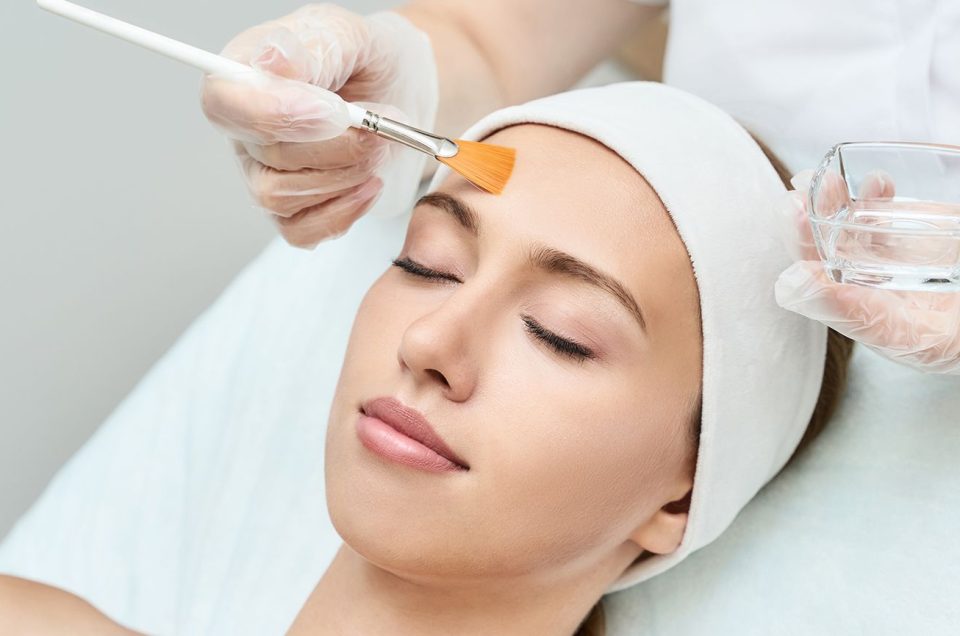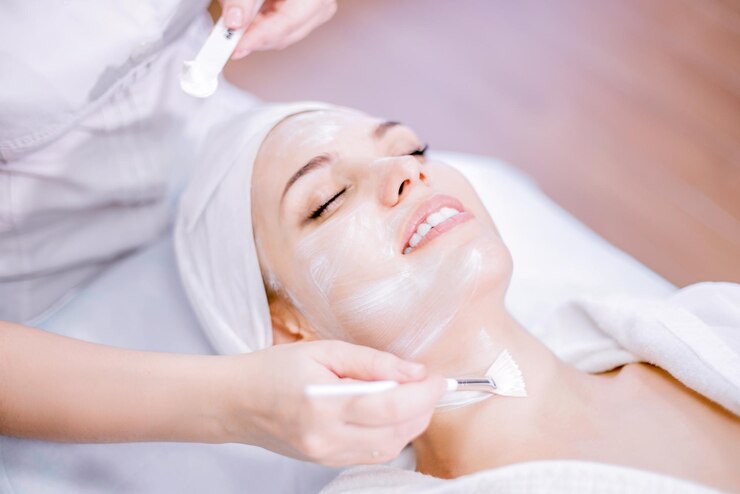Chemical peels are a popular treatment for improving skin texture, tone, and overall appearance. However, to maximize the benefits and ensure proper healing, it is crucial to follow a tailored skincare routine after the procedure. This guide outlines the best practices for post-chemical peel skincare, helping you achieve the best results while minimizing potential side effects.
Understanding the Chemical Peel Process
Before diving into the post-peel skincare routine, it is essential to understand what happens during a Chemical Peels in Dubai This treatment involves applying a chemical solution to the skin to exfoliate the outer layers. Depending on the type of peel—superficial, medium, or deep—the procedure can help reduce fine lines, sun damage, and acne scars. After the peel, the skin goes through a healing process that requires gentle care to promote recovery and enhance results.

Immediate Post-Peel Care
In the hours following your chemical peel, it is vital to take immediate steps to care for your skin. Here are some essential tips for the first few hours post-treatment:
Avoid Direct Sunlight
One of the most critical steps after a chemical peel is to avoid direct sunlight. The skin will be more sensitive and prone to sunburn. Use a broad-spectrum sunscreen with SPF 30 or higher to protect your skin from harmful UV rays.
Keep the Skin Hydrated
Hydration is crucial for the healing process. Use a gentle, hydrating moisturizer to keep your skin moisturized. Look for products containing hyaluronic acid, glycerin, or ceramides, which can help restore moisture.
Do Not Pick or Scratch
It is essential not to touch, pick, or scratch the treated area. This can lead to irritation, infection, and scarring. Allow the skin to heal naturally.
Stay Away from Harsh Products
Avoid using any harsh skincare products, such as scrubs, retinoids, or exfoliating acids, for at least a week after the peel. These can irritate the skin and hinder the healing process.
Week 1: Gentle Care and Hydration
During the first week after your chemical peel, your skin will begin to peel and may feel tight or dry. Follow these guidelines to care for your skin during this time:
Gentle Cleansing
Use a mild, non-abrasive cleanser to wash your face. Avoid any cleansers with exfoliating properties or strong fragrances. Look for a product labeled as “gentle” or “for sensitive skin.” Cleanse your face twice a day to keep it fresh without stripping natural oils.
Hydrating Moisturizers
Continue using a hydrating moisturizer to keep the skin supple. Opt for products that are fragrance-free and specifically designed for sensitive skin. Ingredients like aloe vera, shea butter, and peptides can provide additional hydration and comfort.
Avoid Active Ingredients
Steer clear of active ingredients, such as alpha hydroxy acids (AHAs), beta hydroxy acids (BHAs), and retinoids during the first week. These can cause further irritation and interfere with the healing process.
Sunscreen Application
Apply a broad-spectrum sunscreen daily, even on cloudy days. Reapply every two hours if you are outdoors. Look for sunscreens that contain physical blockers like zinc oxide or titanium dioxide, as these are generally gentler on sensitive skin.
Weeks 2 to 4: Gradual Reintroduction of Products
After the initial week, your skin will likely have healed significantly, and you can start reintroducing certain products gradually. However, you should continue prioritizing gentleness and hydration.
Introduce Antioxidants
After one week, you may begin incorporating antioxidant serums, such as vitamin C or niacinamide, into your routine. These ingredients can help improve skin texture and promote an even skin tone.
Moisturizing Creams
Consider transitioning to a richer moisturizer if your skin feels comfortable. Look for products containing ingredients like hyaluronic acid, glycerin, or ceramides to support skin barrier repair and hydration.
Gentle Exfoliation
After two weeks, if your skin has fully healed, you can start to introduce gentle exfoliation into your routine. Opt for a mild exfoliating product, such as a chemical exfoliant with low concentrations of AHAs or BHAs. Limit this to once a week to prevent over-exfoliation.
Reintroduce Retinoids Carefully
After four weeks, you may reintroduce retinoids into your skincare routine if you had previously used them. Start with a lower concentration and use it once or twice a week to see how your skin reacts. Monitor for any signs of irritation.
Long-Term Skincare Routine
Establishing a long-term skincare routine is essential for maintaining the results achieved from your chemical peel. Here’s what to consider for ongoing care:
Consistency is Key
Maintaining a consistent skincare routine will help preserve your skin’s appearance and health. Stick to gentle cleansing, hydration, and sun protection as daily priorities.
Regular Exfoliation
After your skin has fully healed and adapted, consider incorporating regular exfoliation into your routine. You can alternate between physical and chemical exfoliants, but do so with caution to avoid irritation.
Moisturizers and Serums
Continue using hydrating moisturizers and serums rich in antioxidants to protect and nourish your skin. This will help maintain a youthful and radiant complexion.
Regular Sunscreen Application
Make sunscreen a non-negotiable part of your daily routine. Protecting your skin from UV damage is crucial to preventing premature aging and maintaining results from your chemical peel.
Regular Professional Treatments
Consider scheduling regular chemical peels or other professional skincare treatments. Consult with your dermatologist to determine the appropriate frequency based on your skin type and concerns.
Conclusion
Following a chemical peel, a thoughtful skincare routine is essential for optimal recovery and long-term skin health. Prioritizing gentle cleansing, hydration, and sun protection during the initial healing period can enhance results and minimize potential side effects. As your skin recovers, gradually reintroducing active ingredients can further improve texture and tone. By establishing a consistent skincare routine, you can maintain the benefits of your chemical peel and promote healthy, radiant skin for years to come. Always consult with a skincare professional to tailor your routine to your specific skin type and needs.





Comments